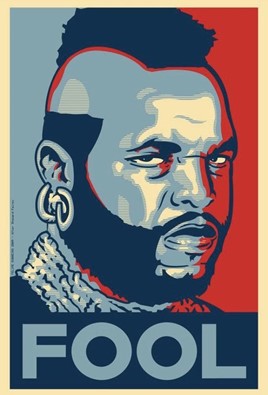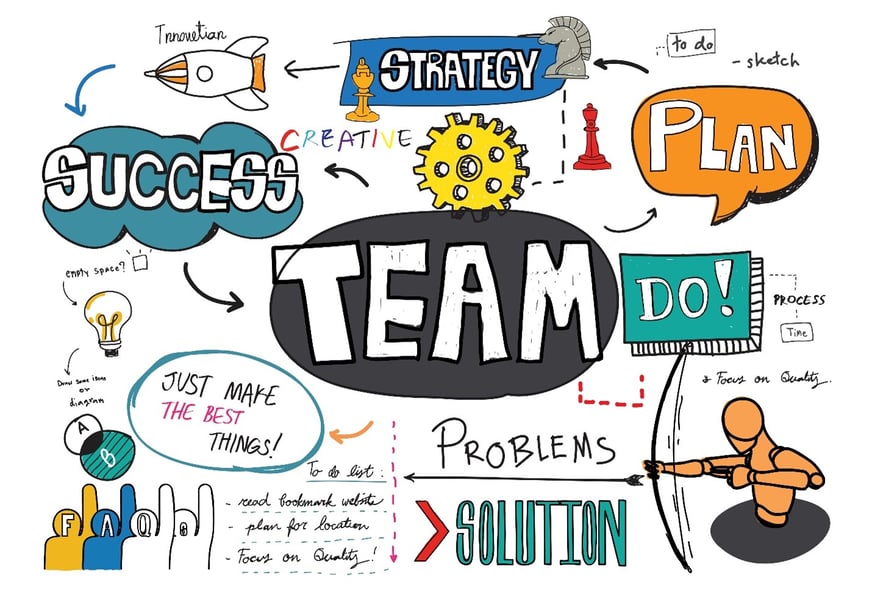How to Build an eDiscovery A-Team
Is the first thing that you think of when you hear the phrase eDiscovery "the A-Team" or even the unrivaled Mr. T? Not so much? Perhaps it should be. EDiscovery teams at first appearance to be a far cry from the “crack commando unit” that starred in the quintessential eighties TV series, the A-Team. And yet, if you look at the slogan that these colorful soldiers of fortune lived by: “If you have a problem, if no one else can help, and if you can find them…. maybe you can hire the A-Team,” you might see the two are not as different as they first appear. It’s plausible that even the most buttoned up case team can learn a thing or two from these retro renegades!
In this 80’s staple, the reboots from this millennia and despite a plot holier than Swiss cheese packed with a smorgasbord of big personalities ripe for potential conflict, the highly effective team is consistently able to mitigate conflict and rely on mutual specialization to bring even the most laughable or complex plan together. Sounds like exactly the type of outcome any case team would love to have on an eDiscovery matter!
What makes an A-Team?
One of the most iconic recurring lines from the epic 80’s masterpiece, the A-team is: “I love it when a plan comes together,” could easily be applied to the successful execution of an eDiscovery strategy on a case. Like Pavlov’s dog, every time I hear this phrase, I am immediately reminded of the gruff Colonel John “Hannibal” Smith, cigar hanging from his lips, commending the rag-tag team on yet again coming together, amplifying each other’s skills, and executing against even the most unfavorable odds. But what made this disparate team such a force to be reckoned with?
The answer lies in the show’s very name, the A-"team.” While most people would reckon that the bombastic power of Mr. T was the secret sauce, the reality was that the team kept their egos in check and formed a highly functional team with discrete remits, methods of always collaborating and an eye to the end goal.
In other words, the A-Team:
1. Shared a common (clearly understood) purpose or goal
2. Had a clear understanding of what needed to be done and who had responsibility for it
3. Had clearly understood roles and responsibilities
4. Had the ability to provide input on decisions that impacted themselves or their remit
5. Bonus points for having a cool nickname
How to Build an eDiscovery A - Team

As with any well-oiled machine, a great team is the sum of its discrete and unique parts. No team is a monopoly, and the best usually functions with a combination of personalities, skills, and temperaments. The A-Team television show was no different. Whether you are architecting your own A-Team in a law firm, corporate legal department or a legal service provider, there are key people, eDiscovery processes and project management approaches that will set your team up to become a high functioning eDiscovery superstars.
Strong Leadership
Nearly all highly functional teams have someone who fills the role of leader and serves as a mechanism to clarify objectives, remits, and personality balancing. For the A-team, Hannibal personified these traits and provided a steady guiding hand. While not every leader will have quite as cool a nickname they should have the trust of his team and when they articulate a plan, roles and responsibilities or offer course correction, their team should listen and act accordingly.
In the eDiscovery space, you need a leader that can clearly articulate and codify effective eDiscovery processes and workflows, combined with implementing a clear project management methodology. From the interviews with custodians and execution of legal hold to document review and production, it is important to have a repeatable, auditable, and transparent process and a person at the wheel that helps drive it. In larger organizations you may want to have a strategic leader who can analyze the big picture at the Acro litigation portfolio level as well as a more tactical leader who can get in the weeds and make real time decisions about the tactically execute the day to day of a matter.
Group Cohesion
Most eDiscovery teams are comprised of a wide array of stakeholders including information technology professionals, inhouse legal teams, eDiscovery solution providers, legal service providers and opposing counsel. Each group has differing skills, perspectives and concerns when facing a complex eDiscovery matter. Aligning objectives at the beginning of the project and reaffirming these initiatives throughout the workflow is a sure way to keep the team laser focused on the optimal outcome and aligned on the steps and effort required to get there.
Whether a person is a member of the IT department, litigation support staff, outside counsel or the internal legal department, having a shared objective helps align the strategy and effort of the entire case team.

Specialization and Skills
Case teams tasked with eDiscovery matters and mountains of ESI must be nimble and able to handle the varied requirements posed by complex eDiscovery matters. Case teams cannot effectively manage the various requirements of a complex eDiscovery matter if they are comprised of a homogeneous group of experts. Effective eDiscovery management requires a blend of project management, legal expertise, familiarity with the eDiscovery tools and nuances of typical and atypical ESI.
• Legal Experts - whether the in-house legal department is facing a nasty internal investigation or if in-house and outside counsel are collaborating on a large-scale litigation, it is important that the members of the eDiscovery case team include the legal experts who will be crafting and presenting the merits of the case or investigation. Their legal expertise will help shepherd the development of the issues, document review protocols and inform the overall eDiscovery workflow agreed upon in the meet and confer.
• Data Gurus & Litigation Support - When architecting a defensible eDiscovery workflow, it is imperative to have members of the litigation support the data science group involved from the outset. Especially with the proliferation of more complicated app based and messaging data, it is important to have a defensible retention process that captures all metadata and mitigates the risk of spoliation. Additionally, with the influx of legal Ai into eDiscovery, your data gurus can identify ways to apply emerging tech to accelerate time to evidence and reduce the cost of eDiscovery for legal teams.
• Project Management Experts - In addition to the technical skills necessary to leverage the right technology and eDiscovery solutions to meet your ESI challenges in an eDiscovery matter, it is also of paramount importance to have a team member who has project management expertise. Organized, a clear understanding of the workflow and deadlines, experience managing disparate stakeholders and detailed approach to documentation all contribute to a seamless eDiscovery matter and cohesive team with clear objectives.
• Nimble Software Partners& Collaborative eDiscovery Service Providers - Today in large scale matters, counsel and client alike are rarely going it alone. Either eDiscovery solution software or legal service providers are often in the mix. These tools and teams serve as a force multiplier for the case team and a way to extend and amplify the capability of teams no matter how lean they are. An effective service provider will streamline the process, problem solve and amplify the insights and capabilities of the case team.
Do You Have an eDiscovery A-Team?
The proof is in the metaphorical pudding with this one. Do you often find yourself exclaiming "I love it when a plan comes together" ala Hannibal? If so, you might just have a high functioning team. If, however, you find yourself missing deadlines, repeating the same errors or, worse yet, find your team members finger pointing when things go awry in your eDiscovery workflow instead of jumping into problem solving mode, then you may have something more like an F-team on your hands!
Aligning objectives, executing while following eDiscovery best practices and quickly course correcting if something does not go according to plan are all earmarks of a healthy and high functioning A-team. If you are not seeing that, perhaps you need to reassess your team or your practices.

